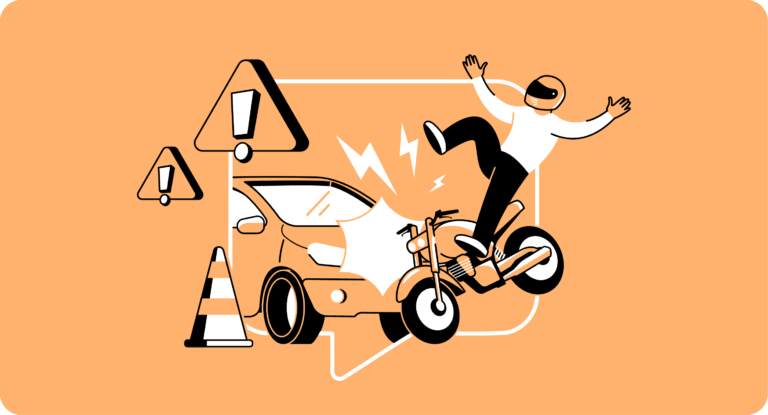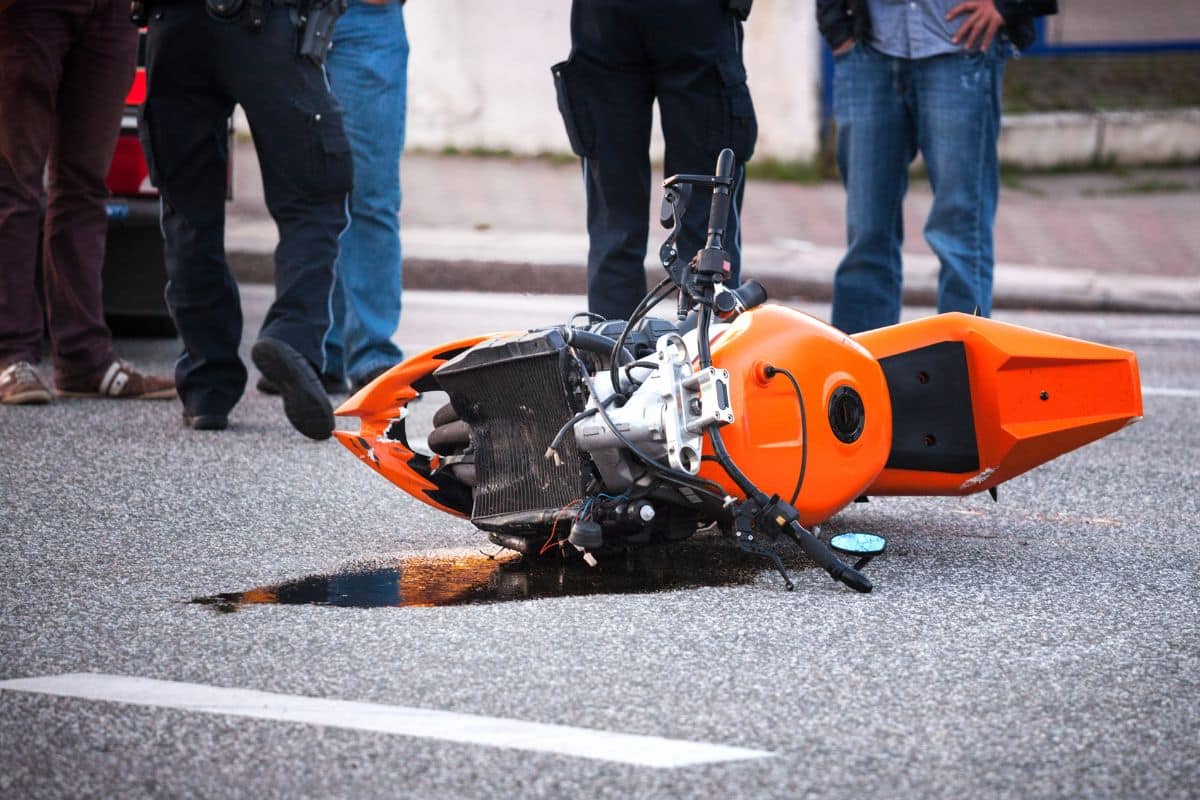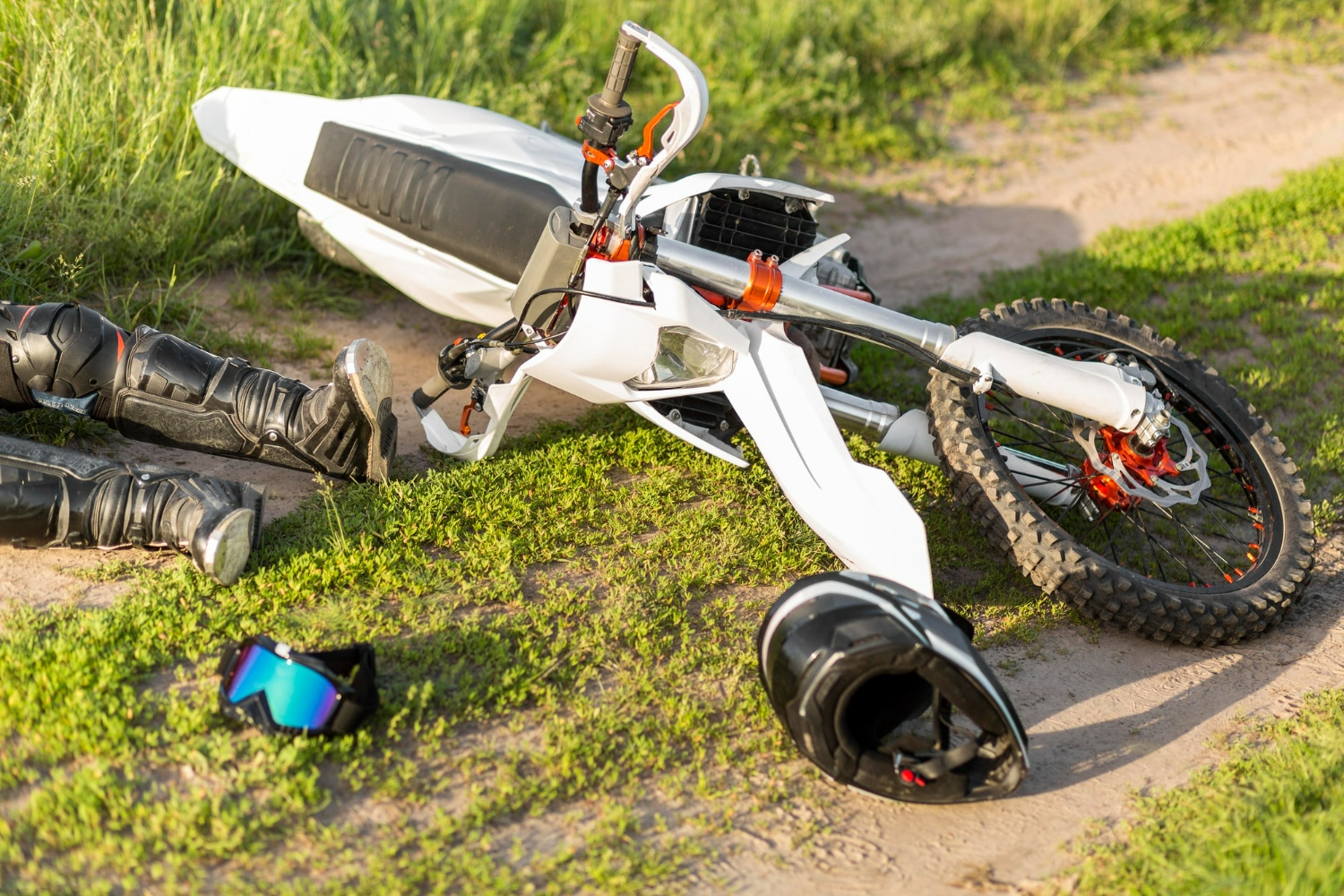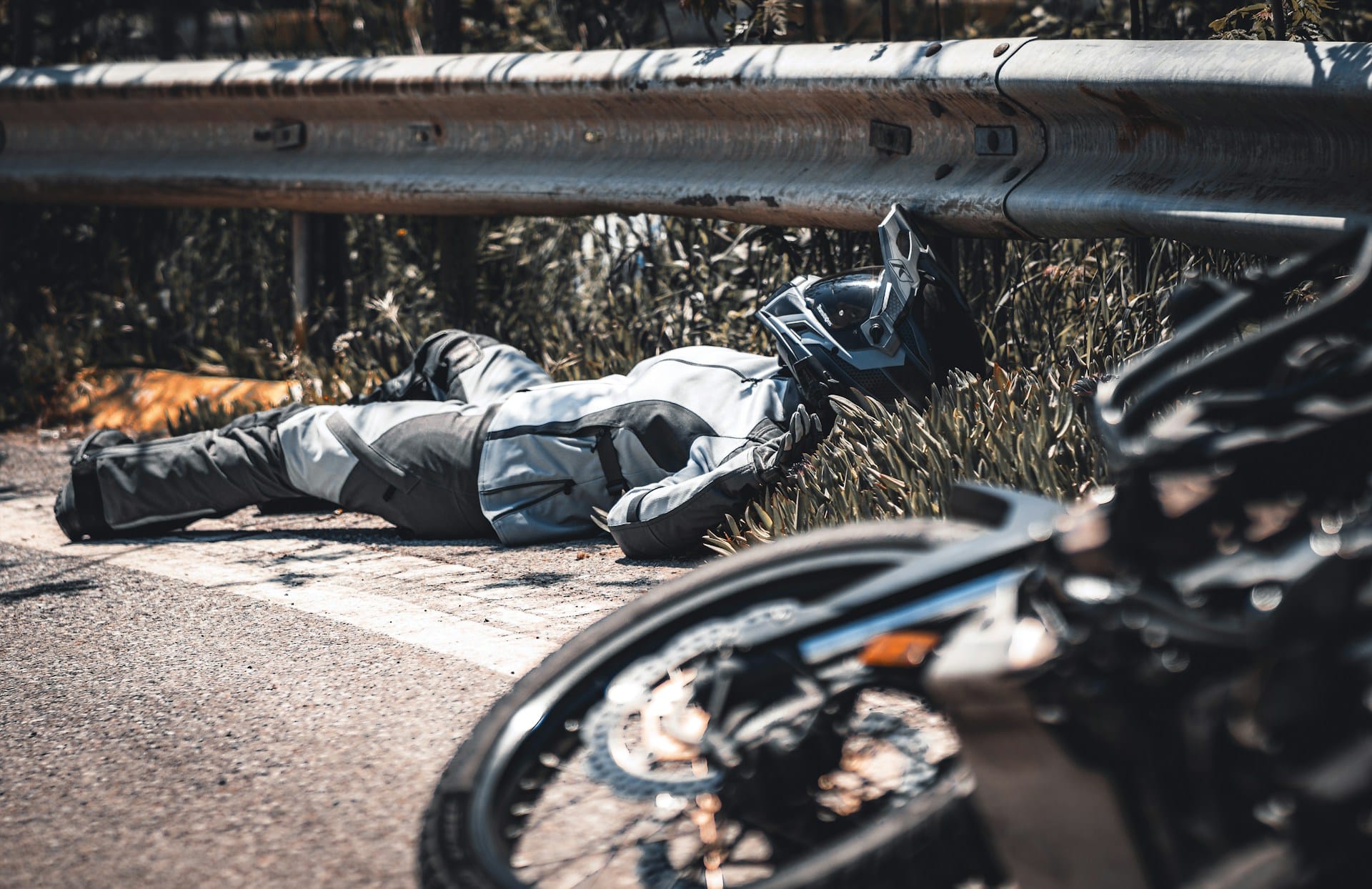Motorcycling brings a thrill but comes with heightened risks. According to the National Highway Traffic Safety Administration (NHTSA), motorcycle accidents are significantly more likely to result in injury or death compared to car accidents, with motorcyclists facing an 80% chance of injury or fatality.
The most common type of collision in these scenarios occurs when a car makes a left turn in front of an oncoming motorcycle, often due to the car driver’s failure to see the motorcycle or misjudge its speed. This type of accident is prevalent and particularly dangerous for motorcyclists, given their limited protection compared to car occupants.
The Most Common Scenario: Left-Turn Accidents at Intersections
Left-turn accidents at intersections predominantly occur when a car initiates a left turn, crossing the path of an oncoming motorcycle. The driver of the car, due to several factors, such as the motorcycle’s smaller size, speed, and distracted driving or obstruction of view, fails to detect the approaching motorcycle. This oversight can result in a severe collision, with the motorcycle’s lack of structural protection leaving the rider exceptionally vulnerable to injury.
Intersections, by their very nature, are zones of increased vehicular conflict due to crossing paths and the converging of different traffic flows. Motorcyclists driving in these spaces must contend not only with the inherent risks of their mode of transport but also with the attention levels and perceptual abilities of other road users.
Who is at Fault in Left-Turn Accidents?
Determining fault in left-turn accidents primarily involves understanding the responsibilities of both parties involved. When a car makes a left turn, the driver is expected to ensure the path is clear before proceeding. This includes recognizing smaller, less visible vehicles like motorcycles.
Motorcycles’ compact size, coupled with potential distractions for the car driver, significantly increases the risk of oversight, leading to collisions. In such scenarios, the fault generally lies with the driver who failed to observe the right-of-way, often the one making the left turn, due to not adequately noticing the approaching motorcycle. This assessment is important in personal injury cases, where establishing fault is necessary for the injured party’s claim.
Head-On Collisions
Head-on collisions are one of the most severe types of road accidents, where two vehicles collide while traveling in opposite directions. These collisions can have devastating consequences, particularly at high speeds. Often, such accidents are the result of one driver’s reckless behavior, such as driving without full attention to the road due to distractions like texting or other forms of distracted driving.
The risk of vehicles ending up in the same lane heading toward each other is significantly increased when a driver decides to overtake another vehicle, potentially leading to an illegal lane change. This maneuver is especially risky on roads divided by a broken yellow line, indicating that passing is permitted under safe conditions.
Overtaking on Two-Lane Roads
Two-lane roads, where vehicles travel in both directions, are common sites for head-on collisions. The law allows for overtaking when one vehicle moves slower than the other, permitting the faster vehicle to use the lane designated for oncoming traffic to pass. This process, while legal under specific conditions, requires careful execution to avoid accidents.
For a safe overtaking maneuver, the driver wishing to pass (let’s call them Driver B) must ensure the road ahead is clear of oncoming traffic and that the yellow dividing line is dashed, indicating passing is allowed. After confirming these conditions and signaling their intention to change lanes, Driver B can then accelerate to move ahead of the vehicle they are overtaking (Driver A). Once safely ahead, Driver B can return to their original lane, signaling their intention to merge back.
The scenario becomes significantly more dangerous when involving motorcycles. Suppose Driver B decides to overtake but fails to notice an approaching motorcycle. In that case, this oversight can lead to a catastrophic head-on collision with the motorcycle, resulting in severe consequences for all involved, especially the motorcyclist.
Motorcycles, lacking the protective structure that encases cars and trucks, leave riders extremely vulnerable in collisions. Unlike vehicle occupants, motorcyclists do not benefit from safety features like seatbelts and airbags. In a head-on collision, a motorcyclist can be thrown a considerable distance, leading to injuries that are often serious or even fatal, despite wearing helmets and protective gear.
The primary factor in these accidents is often negligent driving behavior. Roads, particularly in less populated areas or on highways where speeds are higher, pose an increased risk for such collisions. The potential for severe injury or fatality is significantly higher in accidents involving motorcycles, given their lack of protective barriers, making head-on collisions the most dangerous for motorcyclists.
Visibility Issues
Motorcycles, with their smaller size compared to cars, trucks, and buses, can easily become obscured on the road. This lack of visibility is a huge safety concern, as motorcycles can be hidden by other vehicles or road structures or even fall into a car’s blind spots. The design of a motorcycle offers little in terms of bulk, making it less noticeable, especially in heavy traffic conditions or poor weather.
Additionally, when a motorcycle is positioned directly behind another vehicle or alongside it, the driver of the larger vehicle may not see it in their mirrors. This situation is compounded by the fact that many drivers tend to look for cars, not motorcycles, due to their prevalence, which means motorcycles can go unnoticed until it’s too late.
The challenge of visibility is not just a daytime issue; it extends into the night. Motorcycles are harder to spot after dark, and their single headlight can blend into the sea of lights in urban settings, making it difficult for other drivers to accurately judge their distance and speed.
Motorcyclists can combat this issue by wearing reflective gear and ensuring their lights are functional and visible. However, the primary responsibility lies with other drivers to remain vigilant and assume the presence of motorcycles at all times, checking mirrors and blind spots thoroughly before changing lanes or making turns.
Tip
Contacting an experienced personal injury attorney like Kevin Crockett can greatly enhance your chances of receiving fair compensation. Our team can guide you through the legal process and fight for the justice you deserve.
Speed Misjudgment
Another significant challenge arises from the misjudgment of a motorcycle’s speed by other road users. Motorcycles can accelerate quickly and move at speeds that are difficult for other drivers to gauge accurately. This misjudgment often leads to timing errors in turns or when entering a roadway.
For example, a driver might see a motorcycle approaching in the distance and assume they have enough time to turn across the lane, only to find that the motorcycle is upon them much faster than anticipated. This misperception can result in collisions that could have been avoided with a better understanding of motorcycle dynamics.
The compact profile of motorcycles contributes to this challenge, as it can be harder to perceive their speed accurately without the context of a larger vehicle’s size. Drivers are accustomed to judging the speed of cars and trucks, which occupy more visual space and provide clearer cues for speed through their size and motion relative to the environment. To mitigate this risk, drivers must give motorcycles the same consideration as any vehicle on the road, allowing ample time and space for them to maneuver safely.
Road Sharing Misunderstandings
Misunderstandings about how to share the road safely with motorcycles stem from a lack of awareness and education among some drivers. Sharing the road is not just about physical space; it also involves understanding and anticipating the actions of motorcyclists.
Motorcycles require less room to navigate, but they also need enough space to safely react to road hazards, changes in traffic flow, and other unforeseen circumstances. This is why it’s important for drivers to check their mirrors and blind spots regularly, signal their intentions early, and avoid actions that could endanger motorcyclists, such as suddenly changing lanes or braking without warning.
Pro Tip
For motorcyclists, practicing defensive driving techniques and assuming that you are not visible to car drivers can be lifesaving. Always anticipate potential points of conflict and have a plan to avoid them.
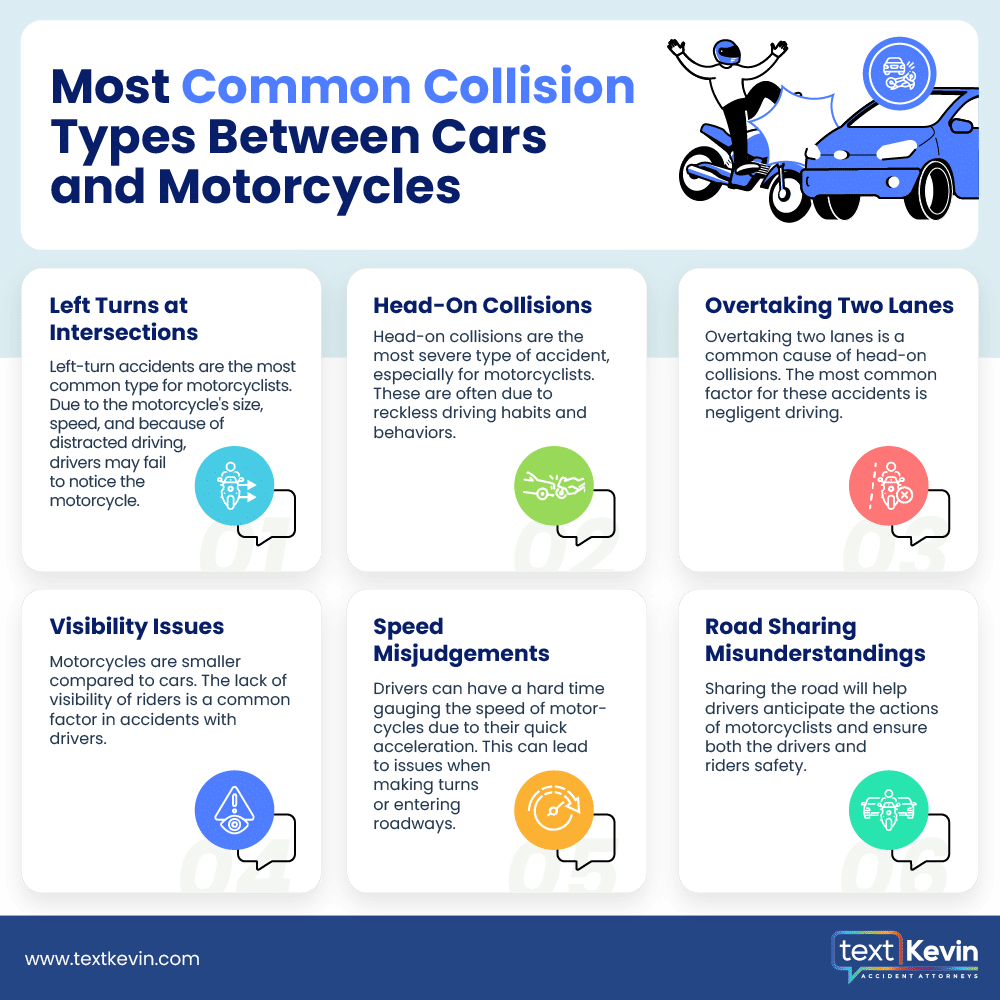
What To Do If You’re Involved in a Collision
After an accident, seek medical attention if you haven’t already. This helps to establish a record of your injuries. It will also help you have strong evidence for your claim. Then, seek out a personal injury lawyer to discuss your case. Give your lawyer all information you have, such as documentation of the scene or exchanges you’ve had with the insurer or other party.
Note
Always wear a helmet and high-visibility clothing when riding a motorcycle. This simple choice significantly increases your safety and visibility.
FAQs on Motorcycle Collisions and Safety
What is lane-splitting, and where is it considered illegal?
Lane-splitting occurs when a motorcyclist drives between lanes of slower-moving or stopped traffic, typically to bypass congestion. While lane-splitting can offer a quick way to navigate through traffic jams, it is illegal in most states due to the increased risk of accidents it poses. The legality of lane-splitting varies by location, so it’s important to be familiar with local traffic laws.
Why is lane-splitting considered dangerous?
Lane-splitting is dangerous because it reduces the reaction time available to both the motorcyclist and surrounding vehicle drivers. It can lead to accidents when motorcyclists enter the blind spots of cars or when vehicles unexpectedly change lanes. Additionally, the close proximity to other vehicles leaves little room for error or sudden maneuvers without risking a collision.
What are the risks of speeding on a motorcycle?
Speeding on a motorcycle significantly increases the risk of accidents and injuries. High speeds reduce the rider’s ability to react to road hazards, make safe turns, or stop quickly. This can lead to losing control, resulting in crashes with other vehicles, fixed objects, or road departures. The thrill of speeding does not outweigh the potential consequences, including severe injuries or fatalities.
How can motorcyclists minimize the risk of lane-splitting accidents?
Although lane-splitting is illegal in many areas, motorcyclists who find themselves in locations where it is allowed should take extra precautions. This includes maintaining a manageable speed, staying alert to the actions of surrounding vehicles, using signals when maneuvering between lanes, and avoiding riding in blind spots. Awareness and defensive driving are key to minimizing risks.
What is a no-contact motorcycle accident, and who can be at fault?
A no-contact motorcycle accident occurs when a motorcyclist takes evasive action to avoid colliding with another vehicle, leading to the motorcyclist losing control and crashing. Even if there is no physical contact between the motorcycle and the car, the driver of the other vehicle can still be found at fault if their reckless or negligent driving caused the motorcyclist to take evasive action.
How do fixed objects pose a threat to motorcyclists?
Fixed objects, such as guardrails, poles, and debris on the road, pose significant risks to motorcyclists. Collisions with these objects can be fatal due to the lack of protective barriers around the motorcycle. Riders should remain vigilant, keep a safe speed, and practice defensive driving to navigate around potential hazards safely.
What impact does driving under the influence have on motorcycle safety?
Driving under the influence greatly impairs a motorcyclist’s judgment, reaction times, and overall ability to operate the vehicle safely. It increases the likelihood of making risky decisions, such as speeding or violating traffic laws, which can lead to accidents with severe or fatal outcomes. DUI is a serious offense with legal consequences and poses a danger to everyone on the road.
Contact a Southern California Motorcycle Accident Lawyer
If you find yourself a victim of a motorcycle accident, know that Kevin Crockett and Crockett Law Group are here to support you every step of the way.
Our firm is dedicated to protecting the rights of motorcyclists injured in accidents. Kevin Crockett’s experience handling complex personal injury cases ensures that our clients receive the best possible representation.
Contact us at [phone] for legal guidance and to make sure your rights are protected.

